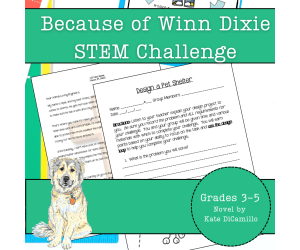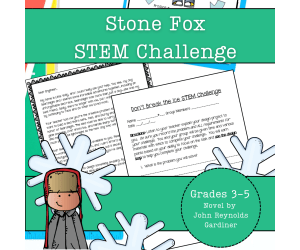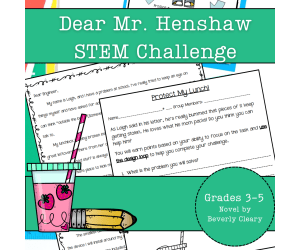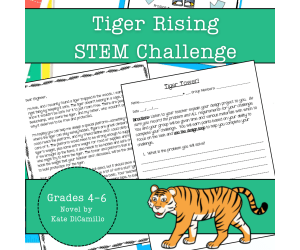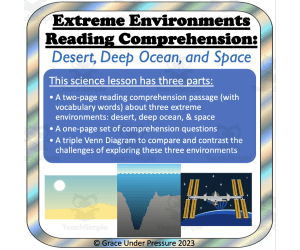2,638 products added recently
Engineering Diagram
Engineering Diagrams offer detailed representations of designs, systems, and mechanical processes. By integrating these diagrams into your lessons, you help students visualize how various components work together in fields like civil, mechanical, or electrical engineering. Use these visual tools to support project-based learning, foster problem-solving skills, and inspire future engineers by making complex ideas tangible and accessible.
FLASHCARDS NUMBERS 1 TO 10 - Frames and Name
, Kindergarten, Preschool, Grade 1, 2, Worksheets & Printables, Flashcards
1. Product name: "Frames of numbers from 0 to 10" 2. Number of pages: This educational document contains 6 pages. 3. Is it editable or not? This educational resource is not editable, it is ready to be printed. In perfect condition. 4. Theme: The topic to be developed in this resource is the numbers from 0 to 10. 5. Document version: This educational resource is in PDF version, A4 format. 6. Color or white/black: This pedagogical resource is designed in colors to make it much more attractive to students. 7. Aimed at children of ages: You can apply this document to children aged 3,4,5,6 who are learning the first numbers from 0 to 10. 8. Area: You will be able to apply and/or use this fascinating educational resource in the area of teaching mathematics for children. 9. Keywords: numbers from 1 to 10, cards from 1 to 10, printables /flashcards">flashcards from 1 to 10, learn numbers from 1 to 10, numbers from 1 to 10 for children. 10. How do I print it? I suggest you print this document as it is. Additionally, I recommend that you laminate or laminate these printables /flashcards">flashcards so that they are much more durable, since they will be used daily in the hands of your students. 11. How to apply it in class? I suggest that you make the effort for each student to have or handle their own printables /flashcards">flashcards and/or cards. You can also ask them to laminate them in a traditional way using tape. 12. Will you need extra elements to use this sheet? You will only need scissors to cut your printables /flashcards">flashcards , and if you additionally want to laminate or laminate them you will need a laminating machine and 175 micron laminating sheets, or if you are going to laminate them with tape. 13. Standards: This educational document was not made based on any specific standard.
Author EDITORIAL LAURA EDUCA
Tags Flashcards Numbers, Numbers 1 To 10, Numbers 1 To 20
18 SPANISH FLASHCARDS | "Las partes del cuerpo"
Foreign Languages, Spanish, Not Grade Specific, Worksheets & Printables, Flashcards
THE 18 FLASHCARDS OF BODY PARTS PRODUCT OVERVIEW: - Number of pages: 9 pages - Format: Designed in PDF, A4 size - Age: You can apply it to students without age limits as long as they are interested in learning the Spanish language. - Design of these flashcards : These flashcards are designed with circular borders, each flashcard has its name and a real image associated with said word. -------------------------------------------------- -- WELCOME TO MY EDUCATIONAL RESOURCES STORE from the ARENAS EDUCATIVAS EDITORIAL. We are a publishing house that is dedicated to the development of teaching materials for primary education in the areas of literacy and mathematics. We believe that it is important that teachers should use as many educational resources in the classroom as an extremely useful tool. This way the students learn better. Below we give you some ideas of the benefits of using teaching resources in your classroom: - They will promote your children's learning. . They will help speed up your students' learning. - They will motivate your students' learning. - You will be a more innovative and interesting teacher for your students. SPECIFIC DESCRIPTION OF THE RESOURCE: 1. Title of the pedagogical resource: This resource is called "18 flashcards of body parts in Spanish" 2. Topic to work on: They will work on the vocabulary of body parts such as arm, hand, foot, head, face, eyes, nose, ear, etc. 3. Area of knowledge where it should be applied: These flashcards can be applied in the area of Spanish learning. 4. Number of pages contained: This document is made up of 9 fabulous pages, on each page you will find 2 flashcards , which will give you a total of 18 vocabulary cards. 5. Is it available in color or white/black? This document is available in color, which will make these flashcards much more attractive to your students. 6. What version is it available in? Available in PDF, A4 size. 7. Editable/Not Editable: It is not editable because this way you can print it faster.
Author EDITORIAL LAURA EDUCA
Tags Spanish, Spanish Flashcards, Spanish Learning, Spanish Exercises, Spanish Resources
ur Decodable Reading Book + PowerPoint: Level 1: 45
Special Resources, ELA, Special Education Needs (SEN), Language Development, Phonics, Reading, Kindergarten, Preschool, Grade 1, Literacy Readers, Teacher Tools
This UR decodable reading book and matching PowerPoint can help children develop reading fluency. It is part of a series of highly structured decodable reading books with controlled vocab; all vocab is decodable using phonic knowledge the child already has (if read in sequence) and true irregular sight words are only slowly and gradually introduced. These books can help children develop reading fluency, providing sequential decodable reading passages that practice previously taught phonic sounds while introducing new ones. Together they form a highly structured phonic reading scheme and should be read in order. The previous books can all be found in the Lilibette's Resources store. They follow on from our previous sets of: CVC Reading Books with matching workbooks Consonant Blends Reading Books with matching workbooks Level 1 Red Books. with matching workbooks Level 1 split Digraphs/Magic 'e' Books with matching workbooks Level 1 More Digraphs and Trigraphs with matching workbooks These books are best read in sequence. This book contains words with the following sounds: ck, oo, ee, sh, ch, th, ng, ing, ar, or, a-e, i-e and u-e, ai, ea, oa, igh, ir, ay and ou, aw, oi and ur. I created these phonic readers as I saw the huge need for highly structured, fun-to-read, early-reading books. They are very popular. I am an Early Years Specialist Teacher (B. Ed) who is currently tutoring children with profound special needs in reading and writing following over 30 years of teaching phonics. Main features: •The Level 1 readers gently introduce sight words, but only those that cannot be learned in a phonetic family, or will be needed before the family has been studied. •All the other words can be sounded out using the necessary phonic knowledge. Pictures do not encourage guessing •Each book tries to tell a simple story. •Each book has been tested on children with severe special needs and those with none – all have loved them as they can read them! •The books should be read in order Who can use these reading books? All beginner readers of any age and ability Struggling readers of all ages and abilities, including special needs pupils with severe dyslexia/other processing difficulties Teachers, parents, classroom assistants, private tutors - anyone who needs them! Are these phonic reading books and workbooks aligned with the UK Gov requirements or LETRS? Yes - totally. Though not part of an approved programme they are based on synthetic, very systematic phonics. They are highly structured, repeating vocabulary, introducing sight words slowly and introducing a-e words while practising those listed above that have been learned before. How long are the books? The reading books are either 8 or 12 pages long. Why are these books FREE when other people's books cost so much? Are they of lesser quality? They are free as I regard the ability to read as being a fundamental right of every living person. Why should some miss out on top-quality resources because they cannot pay for them? In terms of content, they are top quality, carefully planned and sequenced with the aim of helping as many children as possible get started on the phonic road to reading. What is included? 1 PDF Print as a booklet Flip on the short edge
Author Lilibette's Resources
Tags Decodable Reading Books, Phonic Reading Scheme, Download And Print Decodable Readers, Reading Fluency, Special Needs, Literacy Reader, ELA, Phonics, Decodables
Because of Winn Dixie STEM Experiment + STEM Project for Grades 3-5
Science, Technology, Engineering, STEM, Grade 3, 4, 5, Experiments, Activities, Projects, Diagrams, Teacher Tools, Graphic Organizers, Rubrics
Engage your students in a hands-on STEM challenge inspired by Because of Winn-Dixie! This exciting activity combines engineering, creativity, and problem-solving as students design and build a pet-friendly shelter for Winn-Dixie, the lovable dog who’s afraid of storms. Perfect for blending literature with science, this challenge encourages young minds to apply engineering principles using simple materials, all while developing teamwork, critical thinking, and innovation. What’s Included in This Resource: Student Letter: An engaging letter from Opal invites students to participate in the challenge, drawing a direct connection between the story’s problem and the real-world task. The Design Loop Visual: This visual aid is a great tool for students to glue into their science journals for easy reference. It can easily be enlarged as a classroom poster. Step-by-Step Directions: Detailed instructions that can be printed or written into science journals for a hands-on approach. These directions ensure that students stay on track while working through each part of the challenge. Teacher Notes: Helpful guidance to assist you in creating a clear problem statement, establishing success criteria, and setting time limits and materials. Tailor these instructions to fit your classroom’s needs. Key Skills Developed: ✔ Problem-Solving: Encourage students to identify challenges and develop creative, effective solutions. ✔ Engineering Design: Teach the design process by having students follow the design loop to plan, construct, test, and refine their pet shelters. (Discussing area and perimeter will enhance this design specifically.) ✔ Critical Thinking: Help students evaluate their designs, analyze their prototypes, and identify ways to improve them. ✔ Collaboration: Foster teamwork as students collaborate to achieve a common goal. Flexible Classroom Use: This STEM challenge is perfect for guided instruction or as part of a broader literature and science unit. It provides an opportunity for students to connect their love of reading with real-world applications, improving both their scientific knowledge and creative abilities. Why Teachers Love It: ⭐ “My students were so engaged! It brought their love for reading into STEM learning.” ⭐ “This activity is simple to set up and promotes creativity and teamwork.” ⭐ “The combination of literature and science created an ideal cross-curricular experience for my class.” Inspire your students to help Winn-Dixie solve his stormy dilemma and ignite their passion for engineering with this fun, standards-aligned STEM challenge!
Author Kel's Klass
Tags 4th Grade Science Project, 4th Grade Science Experiment, 5th Grade Science Project, 5th Grade Science Experiment, Engineering Diagram, Science Graphic Organizer, Science Rubric, Because Of Winn Dixie, 3rd Grade Science Project, 3rd Grade Science Experiment
Bridge to Terabithia STEM Experiment + STEM Project for Grades 4, 5, 6
Science, Technology, Engineering, STEM, Grade 4, 5, 6, Experiments, Activities, Projects, Diagrams, Teacher Tools, Graphic Organizers, Rubrics
Bring literature to life with this exciting STEM activity inspired by Bridge to Terabithia! This challenge sparks creativity and problem-solving as students plan and construct a bridge for King Jesse as he plans to make entrance to Terabithia safer. Perfect for blending literature with science, it allows students to explore engineering concepts using simple supplies while promoting teamwork and critical thinking. What’s Inside This Resource: Student Letter: A letter from Jesse introduces the challenge, linking the story to a real-world engineering task. Design Loop Graphic: A visual students can attach to their science journals, serving as a step-by-step guide throughout the activity. Detailed Instructions: Choose to print the guide as a packet or have students record each stage in their journals for an interactive experience. Teacher Tips: Practical guidance for crafting a clear problem statement with time constraints, materials, and success criteria tailored to your classroom. Skills Your Students Will Build: ✔ Problem-Solving: Identify obstacles and create inventive solutions. ✔ Engineering Design: Navigate the design loop—plan, construct, test, and refine. This page can easily be enlarged for a classroom poster. ✔ Critical Thinking: Assess their prototype’s performance and pinpoint ways to enhance it. ✔ Teamwork: Collaborate effectively to accomplish shared goals. Versatile Classroom Application: Whether as guided instruction or part of an integrated literature and science unit, this STEM activity encourages students to think creatively, document their process, and meet science and engineering standards. The rubric included is based on engineering concepts, but can also be used as a nonfiction writing rubric for cross-curricular options. Why Educators Love This Resource: ⭐ “My students were fully engaged, combining their passion for reading with STEM!” ⭐ “Simple to set up and encourages creativity and teamwork.” ⭐ “A seamless connection between literature and science for cross-curricular learning!” Empower your students to solve Jesse’s challenge and experience the excitement of engineering with this standards-aligned STEM adventure!
Author Kel's Klass
Tags 4th Grade Science Project, 4th Grade Science Experiment, 5th Grade Science Project, 5th Grade Science Experiment, 6th Grade Science Project, 6th Grade Science Experiment, Engineering Diagram, Science Graphic Organizer, Science Rubric, Bridge To Terabithia
Number the Stars STEM Experiment + STEM Project for Grades 4, 5, 6
Science, Technology, Engineering, STEM, Grade 4, 5, 6, Experiments, Activities, Projects, Diagrams, Teacher Tools, Graphic Organizers, Rubrics
This hands-on activity combines creativity and problem-solving as students design and build a basket for Anne Marie to get the package safely to Uncle Henrik, based on the novel Number the Stars! Perfect for integrating literature and science, this challenge encourages students to apply engineering principles using simple materials while fostering teamwork and critical thinking. What’s Inside This Resource: Student Letter: A letter from Anne Marie introduces the challenge, linking the story to a real-world engineering task. Design Loop Graphic: A visual students can attach to their science journals, serving as a step-by-step guide throughout the activity. Detailed Instructions: Choose to print the guide as a packet or have students record each stage in their journals for an interactive experience. Teacher Tips: Practical guidance for crafting a clear problem statement with time constraints, materials, and success criteria tailored to your classroom. Skills Your Students Will Build: ✔ Problem-Solving: Identify obstacles and create inventive solutions. ✔ Engineering Design: Navigate the design loop—plan, construct, test, and refine. This page can easily be enlarged for a classroom poster. ✔ Critical Thinking: Assess their prototype’s performance and pinpoint ways to enhance it. ✔ Teamwork: Collaborate effectively to accomplish shared goals. Versatile Classroom Application: Whether as guided instruction or part of an integrated literature and science unit, this STEM activity encourages students to think creatively, document their process, and meet science and engineering standards. The rubric included is based on engineering concepts, but can also be used as a nonfiction writing rubric for cross-curricular options. Why Educators Love This Resource: ⭐ “My students were fully engaged, combining their passion for reading with STEM!” ⭐ “Simple to set up and encourages creativity and teamwork.” ⭐ “A seamless connection between literature and science for cross-curricular learning!” Empower your students to solve Anne Marie's immediate need and experience the excitement of engineering with this standards-aligned STEM adventure!
Author Kel's Klass
Tags 4th Grade Science Project, 4th Grade Science Experiment, 5th Grade Science Project, 5th Grade Science Experiment, 6th Grade Science Project, 6th Grade Science Experiment, Engineering Diagram, Science Graphic Organizer, Science Rubric, Bridge To Terabithia
Stone Fox STEM Experiment + STEM Project for Grades 3, 4, 5
Science, Technology, Engineering, STEM, Grade 3, 4, 5, Experiments, Activities, Projects, Diagrams, Teacher Tools, Graphic Organizers, Rubrics
Little Willy is looking for a way to build a sled that will honor Searchlight, in this STEM project inspired by Stone Fox. This science project encourages problem-solving as students plan and construct a sled that will be able to carry Willy safely across a block of ice. Perfect for blending literature with science, it allows students to explore engineering concepts using simple supplies while promoting teamwork and critical thinking. What’s Inside This Resource: Student Letter: A heartfelt letter from Little Willy introduces the challenge, linking the story to a real-world engineering task. Design Loop Graphic: A visual students can attach to their science journals, serving as a step-by-step guide throughout the activity. Detailed Instructions: Choose to print the guide as a packet or have students record each stage in their journals for an interactive experience. Teacher Tips: Practical guidance for crafting a clear problem statement with time constraints, materials, and success criteria tailored to your classroom. Skills Your Students Will Build: ✔ Problem-Solving: Identify obstacles and create inventive solutions. ✔ Engineering Design: Navigate the design loop—plan, construct, test, and refine. This page can easily be enlarged for a classroom poster. ✔ Critical Thinking: Assess their prototype’s performance and pinpoint ways to enhance it. ✔ Teamwork: Collaborate effectively to accomplish shared goals. Versatile Classroom Application: Whether as guided instruction or part of an integrated literature and science unit, this STEM science project encourages students to think creatively, document their process, and meet science and engineering standards. The rubric included is based on engineering concepts, but can also be used as a nonfiction writing rubric for cross-curricular options. Why Educators Love This Resource: ⭐ “My students were fully engaged, combining their passion for reading with STEM!” ⭐ “Simple to set up and encourages creativity and teamwork.” ⭐ “A seamless connection between literature and science for cross-curricular learning!” Encourage your students to help Little Willy achieve his goals and experience the excitement of engineering with this standards-aligned STEM adventure!
Author Kel's Klass
Tags 4th Grade Science Project, 4th Grade Science Experiment, 5th Grade Science Project, 5th Grade Science Experiment, Engineering Diagram, Science Graphic Organizer, Science Rubric, 3rd Grade Science Project, 3rd Grade Science Experiment, Stone Fox
Dear Mr. Henshaw STEM Experiment + STEM Project for Grades 3, 4, 5
Science, Technology, Engineering, STEM, Grade 3, 4, 5, Experiments, Activities, Projects, Diagrams, Teacher Tools, Graphic Organizers, Rubrics
Leigh Botts from Dear Mr. Henshaw needs your help! This STEM project encourages problem-solving as students plan and construct a device that will help protect Leigh's lunch from a sneaky thief. Perfect for blending literature with science, it allows students to explore engineering concepts using simple supplies while promoting teamwork and critical thinking. What’s Inside This Resource: Student Letter: A pleading letter from Leigh introduces the challenge, linking the story to a real-world engineering task. Design Loop Graphic: A visual students can attach to their science journals, serving as a step-by-step guide throughout the activity. Detailed Instructions: Choose to print the guide as a packet or have students record each stage in their journals for an interactive experience. Teacher Tips: Practical guidance for crafting a clear problem statement with time constraints, materials, and success criteria tailored to your classroom. Skills Your Students Will Build: ✔ Problem-Solving: Identify obstacles and create inventive solutions. ✔ Engineering Design: Navigate the design loop—plan, construct, test, and refine. This page can easily be enlarged for a classroom poster. ✔ Critical Thinking: Assess their prototype’s performance and pinpoint ways to enhance it. ✔ Teamwork: Collaborate effectively to accomplish shared goals. Versatile Classroom Application: Whether as guided instruction or part of an integrated literature and science unit, this STEM activity encourages students to think creatively, document their process, and meet science and engineering standards. The rubric included is based on engineering concepts, but can also be used as a nonfiction writing rubric for cross-curricular options. Why Educators Love This Resource: ⭐ “My students were fully engaged, combining their passion for reading with STEM!” ⭐ “Simple to set up and encourages creativity and teamwork.” ⭐ “A seamless connection between literature and science for cross-curricular learning!” Encourage your students to solve Leigh’s challenge and experience the excitement of engineering with this standards-aligned STEM adventure!
Author Kel's Klass
Tags 4th Grade Science Project, 4th Grade Science Experiment, 5th Grade Science Project, 5th Grade Science Experiment, Engineering Diagram, Science Graphic Organizer, Science Rubric, 3rd Grade Science Project, 3rd Grade Science Experiment, Dear Mr. Henshaw
Tiger Rising STEM Experiment + STEM Project for Grades 4, 5, 6
Science, Technology, Engineering, STEM, Grade 4, 5, 6, Experiments, Activities, Projects, Diagrams, Teacher Tools, Graphic Organizers, Rubrics
This hands-on activity combines creativity and problem-solving as students design and build a tower for the safety of the tiger in the novel, Tiger Rising. Perfect for integrating literature and science, this challenge encourages students to apply engineering principles using simple materials while fostering teamwork and critical thinking. What’s Inside This Resource: Student Letter: A letter from Rob Horton introduces the challenge, linking the story to a real-world engineering task. Design Loop Graphic: A visual students can attach to their science journals, serving as a step-by-step guide throughout the activity. Detailed Instructions: Choose to print the guide as a packet or have students record each stage in their journals for an interactive experience. Teacher Tips: Practical guidance for crafting a clear problem statement with time constraints, materials, and success criteria tailored to your classroom. Skills Your Students Will Build: ✔ Problem-Solving: Identify obstacles and create inventive solutions. ✔ Engineering Design: Navigate the design loop—plan, construct, test, and refine. This page can easily be enlarged for a classroom poster. ✔ Critical Thinking: Assess their prototype’s performance and pinpoint ways to enhance it. ✔ Teamwork: Collaborate effectively to accomplish shared goals. Versatile Classroom Application: Whether as guided instruction or part of an integrated literature and science unit, this STEM activity encourages students to think creatively, document their process, and meet science and engineering standards. The rubric included is based on engineering concepts, but can also be used as a nonfiction writing rubric for cross-curricular options. Why Educators Love This Resource: ⭐ “My students were fully engaged, combining their passion for reading with STEM!” ⭐ “Simple to set up and encourages creativity and teamwork.” ⭐ “A seamless connection between literature and science for cross-curricular learning!” Encourage your students to provide a safe haven for the tiger (and Rob and Sistine?) and experience the excitement of engineering with this standards-aligned STEM adventure!
Author Kel's Klass
Tags 4th Grade Science Project, 4th Grade Science Experiment, 5th Grade Science Project, 5th Grade Science Experiment, 6th Grade Science Project, 6th Grade Science Experiment, Engineering Diagram, Science Graphic Organizer, Science Rubric, Tiger Rising
Extreme Environment Reading, Comprehension Questions, and Triple Venn Diagram: Desert, Deep Ocean, Space
ELA, Reading, Reading Comprehension, Science, Technology, Earth and Environmental Sciences, Environmental Science, Engineering, Earth Sciences, Grade 5, 6, 7, 8, Diagrams, Teacher Tools
Are you looking for an engaging middle school reading comprehension activity with a science twist? Or are you teaching a unit about extreme environments and looking for some new lesson ideas? This middle grades extreme environment reading comprehension package is chock full of information and activities including a fun triple Venn Diagram! This science and reading comprehensive lesson includes: Four parts in an easy to use 6 page PDF: First, students will tackle a 2-page reading comprehension passage about Extreme Environments. Specifically the environments of the desert, the deep ocean, and space are introduced and the challenges of human exploration in each one are addressed. This passage is written to be accessible to students with little background knowledge of these topics. Next, students will learn new vocabulary by defining eight important terms including pressure, scorching, and submersible. Then, students will answer seven comprehension questions about the reading passage. This section encourages critical thinking, close reading, and analysis. Finally, students will complete a tripe Venn Diagram comparing and contrasting the challenges faced and supplies needed to explore each of the three extreme environments. For example, pressure is a challenge in space and the deep ocean, but no the desert. A complete answer key is also included to eliminate any guesswork and make marking a snap! Grades to Use With: This lesson is designed for middle school students in grades 5-8 in science or earth science classes. It could also be used in middle school English classrooms as a non-fiction reading comprehension and vocabulary passage. What's Included: 6 Page PDF ready to print Title Page 2 Page Reading Comprehension Passage with 8 vocabulary words 7 Reading Comprehension Questions Triple Venn Diagram & Extension Complete Answer Key If you find this extreme environment lesson useful, check out others in my store: Extreme Environments Debate Extreme Environments Technology Design and Persuasive Presentation How Do Astronauts Meet Their Needs in Space?
Author Grace Under Pressure
Tags Extreme Environments, Reading Comprehension, Critical Thinking, Venn Diagram, Triple Venn Diagram, Comprehension Questions, Middle School Reading, Science, Space, Earth Science
The Mouse and the Motorcycle STEM Experiment + STEM Project
Science, Technology, Engineering, STEM, Grade 3, 4, 5, Experiments, Activities, Projects, Diagrams, Teacher Tools, Graphic Organizers, Rubrics
Help design and build a four-wheeled car for Ralph, the adventurous mouse, from The Mouse and the Motorcycle. Perfect for integrating literature and science, this challenge guides students to apply engineering principles using simple materials while fostering teamwork and critical thinking. What’s Inside This Resource: Student Letter: A fun letter from Ralph introduces the challenge, linking the story to a real-world engineering task. Design Loop Graphic: A visual students can attach to their science journals, serving as a step-by-step guide throughout the activity. Detailed Instructions: Choose to print the guide as a packet or have students record each stage in their journals for an interactive experience. Teacher Tips: Practical guidance for crafting a clear problem statement with time constraints, materials, and success criteria tailored to your classroom. Skills Your Students Will Build: ✔ Problem-Solving: Identify obstacles and create inventive solutions. ✔ Engineering Design: Navigate the design loop—plan, construct, test, and refine. This page can easily be enlarged for a classroom poster. ✔ Critical Thinking: Assess their prototype’s performance and pinpoint ways to enhance it. ✔ Teamwork: Collaborate effectively to accomplish shared goals. Versatile Classroom Application: Whether as guided instruction or part of an integrated literature and science unit, this STEM activity encourages students to think creatively, document their process, and meet science and engineering standards. The rubric included is based on engineering concepts, but can also be used as a nonfiction writing rubric for cross-curricular options. Why Educators Love This Resource: ⭐ “My students were fully engaged, combining their passion for reading with STEM!” ⭐ “Simple to set up and encourages creativity and teamwork.” ⭐ “A seamless connection between literature and science for cross-curricular learning!” Inspire your students to solve Ralph’s problem and discover the joy of engineering with this fun, standards-aligned STEM challenge!
Author Kel's Klass
Tags 4th Grade Science Project, 4th Grade Science Experiment, 5th Grade Science Project, 5th Grade Science Experiment, Engineering Diagram, Science Graphic Organizer, Science Rubric, 3rd Grade Science Project, 3rd Grade Science Experiment, The Mouse And The Motorcycle





